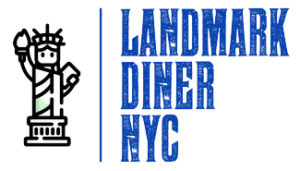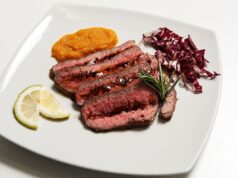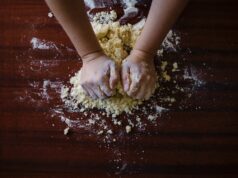In a recent study, researchers found that food should be rejected if it has been previously frozen and thawed for an unknown amount of time. Food should also be rejected if there is not enough evidence to prove its freshness or quality.
The “if an order of vacuum-packaged sliced deli meat is delivered at 49°f (9°c), the meat should be” is a question that is asked frequently. The answer to this question depends on how quickly it will be consumed, and if there are any other items in the order that require refrigeration.
Salami, for example, should be discarded if it is wet when it should be dry. Accept no food that has visible indications of bugs or pest damage. Texture Slimy, sticky, or dry meat, fish, or fowl should be avoided.
What is an indication that food should be rejected in this way?
Food that exhibits insect damage, an odd odor, or color should be rejected at the loading dock upon receiving. Some foods, such as salami, should be rejected because they are wet while they should be dry. Any meal with an unusual odor or color should also be avoided.
Also, when should you refuse poultry? Goods that need to be refrigerated should be carried at temperatures of at least 41 degrees Fahrenheit or below, and frozen foods should be transported in temperatures of 0 degrees Fahrenheit or lower. The food should be discarded if the temperature of the vehicles is higher than these values.
What is the most essential thing to consider when selecting an authorized food supplier?
It has been examined and found to be in compliance with all applicable local, state, and federal laws.
What should you be looking for while checking incoming food?
The following are five measures to receive food delivery safely:
- Examine the car. This may seem out of place, but it is really an excellent indication of the delivery’s quality.
- Take note of the delivery schedule.
- Take a look at the package.
- Make sure the temperature is correct.
- Make sure the meal is of good quality.
Answers to Related Questions
Which kind of food poisoning is the most common?
Food poisoning caused by Salmonella is one of the most frequent forms of food poisoning. Salmonella bacteria may be found in both human and animal intestines. Enteric campylobacteriosis is a bacterial infection of the small intestine.
What are the proper food storage procedures?
The most fundamental guideline to remember is to keep raw goods below, not above, prepared or ready-to-eat foods. Foods should be kept at 4°C (39°F) or below, which is the safe temperature for refrigerated storage. Refrigerated Items
- Keep an eye on the refrigerator’s temperature on a regular basis.
- Refrigerators should be kept in excellent operating condition.
Which foods are properly stored?
How to Keep Food Fresh in the Fridge:
- The top and middle shelves are available. Dairy products, ready meals and packed foods, leftovers, cooked meats, and prepared salads are examples of ready-to-eat foods.
- Shelf on the bottom. To prevent raw meat, poultry, and fish from contacting or leaking onto other items, keep them in sealed containers.
- Salad cabinet.
Which foods should be returned when they are delivered?
Investigate Food Packaging
During food service delivery, food packaging should constantly be examined. Any package with holes should be returned to the sender. Any canned goods with bulging ends should be avoided. Anything that has a broken seal, a missing label, or is filthy should not be accepted.
What is the danger zone for temperature?
(40 °F – 140 °F) “Danger Zone”
Bacteria grow most quickly at temperatures between 40 to 140 degrees Fahrenheit, doubling in number in as little as 20 minutes. The “Danger Zone” is the name given to this temperature range. Food should never be left out of the refrigerator for more than 2 hours.
What exactly is TCS food?
TCS food is food that has to be kept at a certain temperature for a certain amount of time to prevent the development of germs and the generation of toxins. This meal is moist and protein-rich, with a pH of neutral to slightly acidic. To live, most bacteria need resources such as carbohydrates or proteins.
When properly using the FIFO technique, the food kept in the front should be the food that?
The food kept at the front should have the earliest expiry date when utilizing the FIFO technique properly.
What makes food go bad?
Food spoilage is caused by microscopic microorganisms. These microscopic creatures, known as spoilage bacteria, eat unprotected goods and create waste. Bacteria will grow as long as food and water are available, which may be very quickly. Bacterial waste is the source of ruined food’s unpleasant odor and rotting look.
Which foods must be kept at a certain temperature and for a specific amount of time in order to be safe?
TCS foods include milk and dairy products, eggs, meat (beef, pig, and lamb), poultry, fish, shellfish, and crustaceans, baked potatoes, tofu or other soy protein, sprouts and sprout seeds, sliced melons, cut tomatoes, cut leafy greens, untreated garlic, and sprouts and sprout seeds.
Which method is most efficient for reducing germs in food?
One of the greatest ways to ensure that your business does not create a food-poisoning epidemic is to cook properly. All pathogens (excluding spores) are killed or reduced to a degree where they cannot make humans sick when cooked properly.
Why is FIFO (first in, first out) storage employed?
The FIFO (First In, First Out) system is a method of storing and rotating food. The food that has been in storage the longest (“first in”) should be the first to be utilized (“first out”) in a FIFO system. This technique helps businesses and households in keeping their food storage orderly and ensuring that food is used before it spoils.
What should a supervisor do if there is no way to verify that a food item is accurately presented?
Customers must not be misled or misinformed when food is served to them. The following should not be used to distort the look of food. Food that has not been presented accurately must be discarded.
What are the packing requirements for non-food items?
When you get food and nonfood products like single-use cups, cutlery, and napkins, they must be packed properly. Items should be sent in their original packaging with the manufacturer’s label attached. Food and food-contact surfaces should be protected from contamination by the packaging, which should be undamaged and clean.
Which of the items in the cooler is properly stored?
Examine the Flashcards
| Front | Back |
|---|---|
| Which of the items in the cooler is properly stored? | Salad of macaroni and cheese held atop raw fish |
| What internal temperature should cut melons be kept at? | 41 degrees Fahrenheit or less |
| All TCS foods that will be kept for more than hours must be labeled. | 24 |
What is the highest temperature at which fresh meat may be received?
The temperature is 41 degrees Fahrenheit.
Is there a method to avoid backflow?
Answer: C – The only method to avoid backflow in drainage and sewage systems is to use an air gap. This keeps dangerous germs out of the restaurant’s sinks and other water receptacles.
Which of the following empty, cleaned, and sanitized containers is not permitted to be used to keep food?
Which of the following empty, sterilized containers may not be used to store food?
- Answer.
- annyksl.
- Answer: a gallon of sanitizing powder. Explanation: Chemical-storage containers cannot be reused, much less utilized to keep food.
- Answers have been left. It’s completely free to join.
- To let people know how useful it is, click to let them know.
What exactly is the four-hour rule?
The 2 Hour/ 4 Hour Rule specifies how long fresh potentially hazardous foods*, such as cooked meat and meat-based foods, dairy products, prepared fruits and vegetables, cooked rice and pasta, and cooked or processed foods containing eggs, can be safely held at temperatures in the danger zone; that is, between 40°F and 40°F.
What are three circumstances that might cause a shipment of fresh chicken to be rejected?
FRESH POULTRY SHOULD BE REJECTED IF:
- Around the neck, there is a purple or green discoloration.
- wing tips that are dark (red tips are acceptable)
- Stickiness around the joints or beneath the wings.
- a strange/unpleasant odor
- above 41 degrees Fahrenheit
Which items should be rejected? is a question that has been asked by many people. The answer to this question is not straightforward, but there are some things you can do to make sure your food is safe. Reference: which item must be rejected when inspecting a delivery shellfish at 52.
Frequently Asked Questions
Which item must be held at 41 F or lower?
A: A thermometer.
Which item should be rejected bags of organic cookies in torn packaging?
A: the cookies should be rejected
Which condition of the food should cause a manager to reject a case of frozen steaks?
A: The condition of the steaks would cause a manager to reject them because they are not frozen.
Related Tags
- servsafe which item should be rejected
- an operation must be closed immediately in the event of a
- what should be done with an item that has been recalled?
- shell eggs should be received at what temperature
- when receiving fresh meat its temperature at the time of receipt must not be higher than




